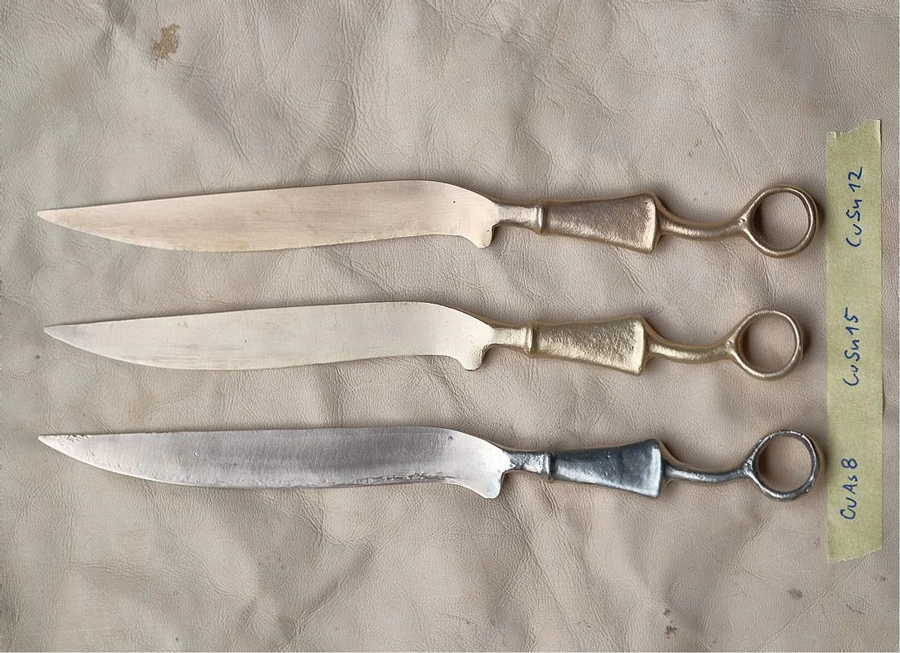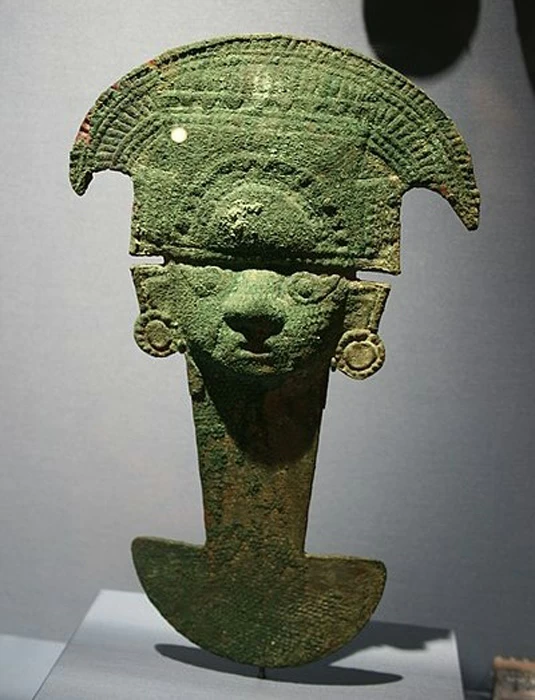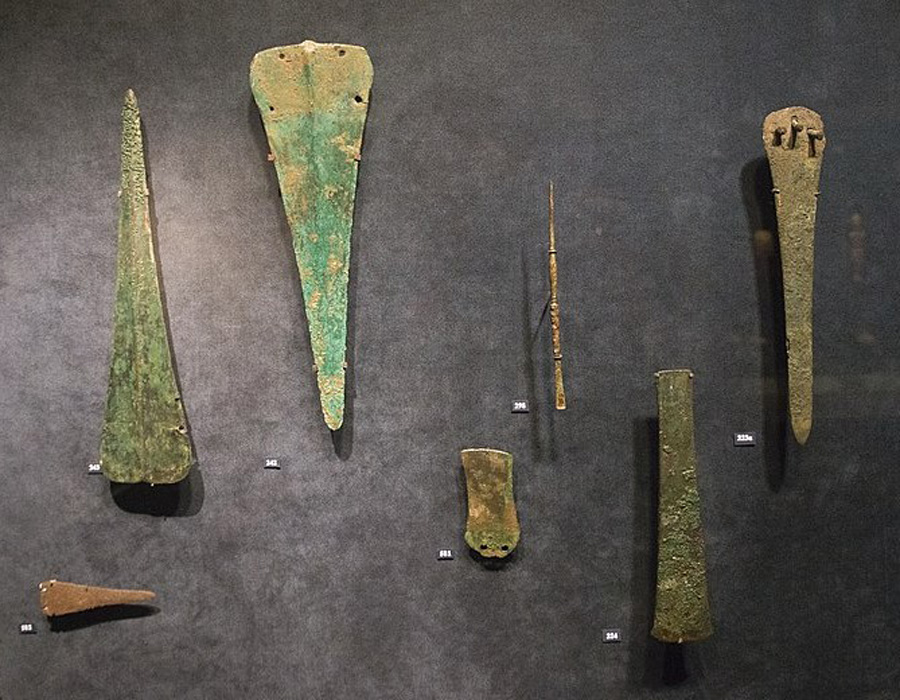The development of human society is traditionally split into segments. The Stone Age developed into the Bronze Age, where bronze working replaced the stone tools and weapons previously used. So, too, the Iron Age replaced the Bronze Age.
These advances are generally thought of as a clean progression from one metal to the next, but this is not the case, and belies the experimentation that the ancient blacksmiths undertook in searching for better metals. This experimentation could be deadly.
For a time, during the Bronze Age from the 5th millennium BC the strongest and most easily worked metal available for use was arsenical bronze. For a brief period, this highly poisonous material was the pinnacle of technology.
Metal workers desperately searched for a better substitute, but before other techniques were developed, culminating in the breakthrough into the Iron Age, the metal they were working was literally killing them.
Origins
Traditional, and most commonly, bronze is an alloy of copper and tin. However, Bronze Age metalworkers found that adding arsenic instead of tin resulted in a more workable final product, and one that had a better casting behavior.
Copper is usually contaminated with arsenic in any case, and as a result the term arsenical bronze when used in archaeology only usually applies to alloys that have more than 1% of arsenic by weight. This is a huge amount of arsenic, a deadly poison which can be absorbed through the skin.

But, despite the dangers, arsenical bronze occurs in the archaeological record around the world. The earliest known artifact is from the 5th millennium BC and was found on the Iranian plateau (which encompasses much of central, south, and western Asia). It is not clear in all cases whether arsenic was deliberately added to copper, but for some societies this was definitely intentional.
Four possible methods may have been used to produce arsenical bronze alloys. The first is through the addition of arsenic-bearing metals to molten copper, though this lacks conclusive evidence.
- Lead Into Gold? Nicolas Flamel and The Philosopher’s Stone
- Trojan War Myth: Could It Have Really Happened?
The reduction of copper arsenates, another way to work the material, produces an alloy high in arsenic and antimony. The co-smelting of oxidic and sulphidic ores, or the reduction of roasted copper sulfarsenides would also produce the desirable material, although the latter would produce toxic fumes.
The exposure to arsenic, whether through fumes, absorption or contamination of arsenic dust, would have had a significant impact on the mortality rate of the metalworkers. And yet this did not stop them, and the artifacts produced by these methods were highly sophisticated. Highly decorated axes and ornaments in arsenical bronze survive to this day.
Advantages of Arsenic Bronze
One of the main advantages of using arsenical bronze is that it reacts with oxygen to form oxides that vaporize from the liquid metal. When the metal cools it separates in such a way that the metal to be deformed and worked without fracturing.
Secondly, the alloy when created in this way can be worked into a material that is far harder than just regular copper, and which is far easier to work than tin bronze. This means that it performs better when used for cutting or chopping.
Evidence for this comes from bronze daggers that have been found in the Caucasus between Europe and Asia, as well as in Mexican bells made from copper.
Where has it been Found?
Arsenical bronze was used by many societies and cultures around the world. From first appearing on the Iranian plateau, it spread to ancient Mesopotamia in modern-day Iran, Iraq, and Syria.
This area, the cradle of civilization, had the earliest bronze metallurgy in the world. It has been found in use from the 4th millennium BC through to at least the mid-2nd millennium BC.
Societies ranging from the Akkadians of Ur and Amorites around the Tigris and Euphrates rivers in Mesopotamia spread the use of this metal across the middle east throughout the Bronze Age. From the Judean Desert near the Dead Sea it spread throughout the Levant, pushing the technological developments throughout the region.

The use of arsenical bronze also spread east, along the trade routes from north-western China to the Gansu-Qinghai region. However, it is still unclear as to whether the artifacts were imported or made in the locale.
It is more likely that the bronze here was constructed through local exploitation of mineral resources. The artifacts in arsenic bronze found here, by contrast, show similarities with the Eurasian steppe.
- Hattusa: The Great Hittite City At The Edge Of The World
- Thick Skinned: Why Did Vikings Really Cover Their Shields with Leather?
The archaeological record from regions as far apart as Egypt, the Caucasus, and Peru suggests that arsenical bronze was used alongside tin bronze. In some areas, the continued use of this dangerous substance carried even on into the Iron Age for the manufacture of trinkets and decorative objects.
For the most part however, the use of arsenical bronze was likely phased out through time. Tin bronze, although much less easily worked, was nowhere near as dangerous, and remained popular in certain areas.
Bronze: The Wonder Material
The discovery of bronze revolutionized society. Bronze tools, weapons, armor, and building materials lasted much longer than their stone predecessors, and could be melted down and used again and again.
In many parts of the world, large hoards of bronze artifacts have been discovered, implying that bronze was valued by historic populations. It may have even been an indicator of social status. In Europe for example, large hoards of bronze tools like socket axes with no signs of wear have been found. Axes at the time were the most valued tools of the period.
Bronze was initially used for producing weapons; however, it soon became utilized by metal workers to produce art. The most common method of producing bronze sculptures was through the lost wax process. This created hollow one-of-a-kind sculptures in molded form.
A Deadly Period of History
The ancients must have known the dangers of arsenic bronze, and the deadly trade-off it represented. It produced a hard, durable material that could be used to create tools, weapons, and decorative pieces. But it was killing the men who worked it.

Tin bronze may have been harder to work, but it could ultimately produce a similarly strong alloy, without the lethal dangers the other metal presented. Arsenical bronze was therefore something of a short cut, a metal less skilled blacksmiths could use, but at what cost?
What is certain is that many cultures were prepared to take that risk. Bronze, as a material, was a key element in the development of modern society. And arsenical bronze, the deadly metal of the Bronze Age, has a significant part to play in that development.
Top Image: Arsenical bronze was commonly used in lost-wax casting. Source: z1b / Adobe Stock.
By Kurt Readman